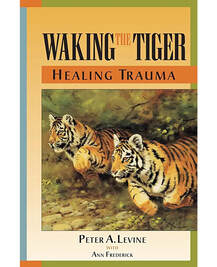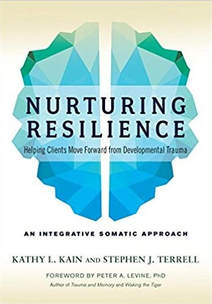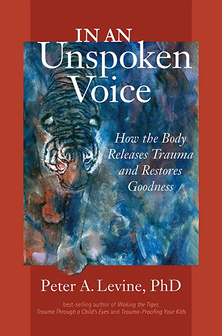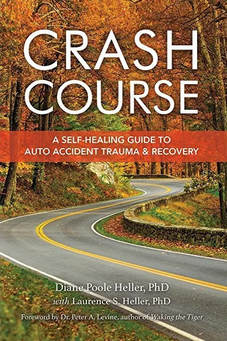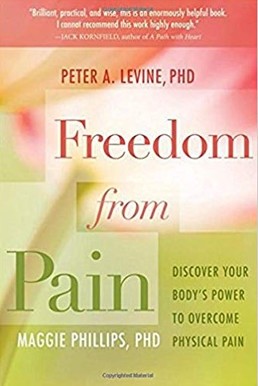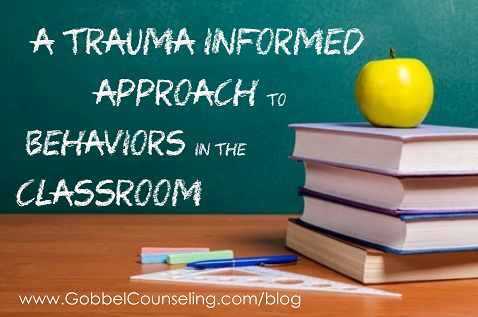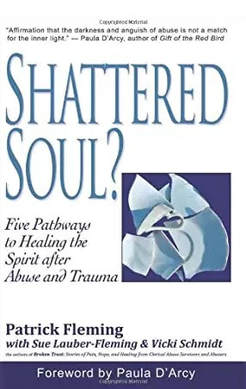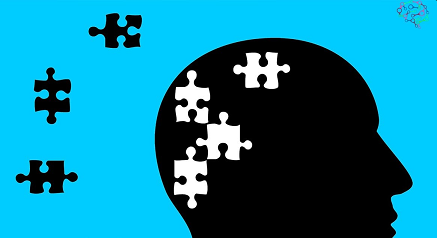Trauma Resources
DEDICATED TO RESOLVING TRAUMA WORLDWIDE
|
Books to Read or Listen To
Waking the Tiger : Healing Trauma : The Innate Capacity to Transform Overwhelming Experiences, 1997, by Peter Levine.
In an Unspoken Voice: How the Body Releases Trauma and Restores Goodness, 2010, by Peter Levine.
Trauma and Memory: Brain and Body in a Search for the Living Past: A Practical Guide for Understanding and Working with Traumatic Memory, 2015, by Peter A. Levine Ph.D. and Bessel A. van der Kolk M.D.
Nurturing Resilience: Helping Clients Move Forward from Developmental Trauma -- An Integrative Somatic Approach, 2018, by Kathy L. Kain and Stephen J. Terrell.
The Tao of Trauma: A Practitioner's Guide for Integrating Five Element Theory and Trauma Treatment, January 2019, by Alaine D. Duncan and Kathy L. Kain.
Healing Trauma: A Pioneering Program for Restoring the Wisdom of Your Body, 2008, by Peter Levine.
Trauma-Proofing Your Kids: A Parents’ Guide for Instilling Confidence, Joy and Resilience, 2008, by Peter Levine.
It Won’t Hurt Forever: Guiding Your Child Through Trauma, 2004, by Peter Levine.
Trauma Through a Child’s Eyes: Awakening the Ordinary Miracle of Healing, 2006, by Peter Levine.
Freedom from Pain: Discover Your Body’s Power to Overcome Physical Pain, 2012, by Peter Levine and Maggie Phillips.
Sexual Healing, Transforming The Sacred Wound (Audio CD), 2005, by Peter A. Levine.
The Body Bears the Burden: Trauma, Dissociation, and Disease, 2007, by Robert Scaer.
The Polyvagal Theory: Neurophysiological Foundations of Emotions, Attachment, Communication, and Self-regulation, 2011, by Stephen Porges.
The Pocket Guide to the Polyvagal Theory: The Transformative Power of Feeling Safe, 2017, by Stephen W. Porges.
The Polyvagal Theory in Therapy: Engaging the Rhythm of Regulation (Norton Series on Interpersonal Neurobiology), 2018, by Deb A. Dana and Stephen W. Porges.
Accessing the Healing Power of the Vagus Nerve: Self-Help Exercises for Anxiety, Depression, Trauma, and Autism, 2017, by Stanley Rosenberg and Stephen W. Porges.
Healing Developmental Trauma: How Early Trauma Affects Self-Regulation, Self-Image, and the Capacity for Relationship, 2012, by Laurence Heller Ph.D. and Aline Lapierre Psy.D.
Crash Course: A Self-Healing Guide to Auto Accident Trauma and Recovery, 2001, by Diane Poole Heller and Laurence Heller.
The Boy Who Was Raised as a Dog: And Other Stories from a Child Psychiatrist's Notebook--What Traumatized Children Can Teach Us About Loss, Love, and Healing (3rd Edition), 2017, by Bruce D. Perry and Maia Szalavitz.
Shattered Soul?: Five Pathways to Healing the Spirit after Abuse and Trauma, 201, by Patrick Fleming and Sue Lauber-Fleming.
Emotional Harmony: Using SomEx – A Somatic Experiential Intervention to Repair and Transform Your Life, 2015, by Kent D. Fisher.
|
"TRAUMA IS A FACT OF LIFE. IT DOES NOT, HOWEVER, HAVE TO BE A LIFE SENTENCE. NOT ONLY CAN TRAUMA BE HEALED, BUT WITH APPROPRIATE GUIDANCE AND SUPPORT, IT CAN BE TRANSFORMATIVE.
HOWEVER, TRAUMA IS NOT, WILL NOT, AND CAN NEVER BE FULLY HEALED UNTIL WE ALSO ADDRESS THE ESSENTIAL ROLE PLAYED BY THE BODY." (PP. 2-3) "THIS BOOK IS DEDICATED TO THOSE WHO HAVE BEEN TORMENTED BY THE HUNGRY GHOSTS OF TRAUMA. TO THESE PEOPLE, WHO LIVE IN A CAGE OF ANXIETY, FEAR, PAIN AND SHAME, I HOPE TO CONVEY A DEEPER APPRECIATION THAT THEIR LIVES ARE NOT DOMINATED BY A "DISORDER" BUT BY AN INJURY THAT CAN BE TRANSFORMED AND HEALED! (P. 12).
|
"THERE IS A QUIET REVOLUTION taking place in how we provide help to those who have experienced trauma in their earliest years. Theories relating to developmental trauma have been slowly moving to the forefront within psychotherapy communities, trauma therapists, neuroscientists, and perhaps most of all, clients who are seeking help for their lifelong challenges. In this book, we explore that body of knowledge, and propose a body-oriented, somatic approach to reaching and healing the core of developmental trauma." (p. 1). |
|
|
How do you help a grieving friend?
|
You can’t heal somebody’s pain by trying to take it away from them.
|
"IN GENERAL, THE CAPACITY FOR SELF-REGULATION IS WHAT ALLOWS US TO HANDLE OUR OWN STATES OF AROUSAL AND OUR DIFFICULT EMOTIONS, THUS PROVIDING THE BASIS FOR THE BALANCE BETWEEN AUTHENTIC AUTONOMY AND HEALTHY SOCIAL ENGAGEMENT. IN ADDITION, THIS CAPACITY ALLOWS US THE INTRINSIC ABILITY TO EVOKE A SENSE OF BEING SAFELY "AT HOME" WITHIN OURSELVES, AT HOME WHERE GOODNESS RESIDES." (P. 13) |
"This book is to help you understand why post-traumatic stress response may feel "crazy-making" but that you are not crazy! Given what happened to you, your trauma symptoms, if you have them, do make sense and often can be significantly reduced when understood and respected. The body is intelligent in its inherent wisdom regarding its own capacity to heal with the proper support. if I could build a billboard for trauma survivors it would say in bold letters: YOU ARE NOT CRAZY! Under that, I might add, YOU CAN HEAL! Your body knows how to heal." (p. 4) |
"When we are released from the trauma of pain and past events, we recover our full instincts and the energies that have been trapped in the prison of constriction and collapse. Recovery from trauma means rediscovery of the missing parts of our being that allow us to feel whole and complete, or maybe discover for the very first time. Then, we can begin to come alive and thrive, finding freedom from the pain of brokenness. |
|
Robyn Gobbel, LCSW, has been asked for an article or some scholarly referenced material that parents can give to teachers that describes why a traditional behavioral management system (levels, colors, stop-light, clip charts, etc.) don’t work for kids who have experienced early trauma — in fact they often make behaviors worse. She has not run across a succinct, easy-to-read, yet steeped in science article about WHY traditional behavior management systems don’t work for our kids.
She wrote an article entitled, “A Trauma Informed Approach to Behaviors in the Classroom” but wrote it in a casual manner as a letter to the teacher. It is a succinct, easy-to-read article which is steeped in science. Click on the image to read the article. How to build trauma-informed care to build resilience to childhood trauma |
“What we have observed, however, is that trauma, of whatever kind, can alter and sometimes sever your connection with your soul. Abuse and trauma can obscure your vision of your soul’s inner light. They can block your ability to hear its whispers of wisdom and guidance. They can prevent you from knowing the truth of who you are and from seeing and feeling your innate value and worth.” (p. 30). |
|
Historical Trauma and Cultural Healing
What is historical trauma? How do people and communities experience it? And how can reconnecting to cultural practices help families and communities heal? |

